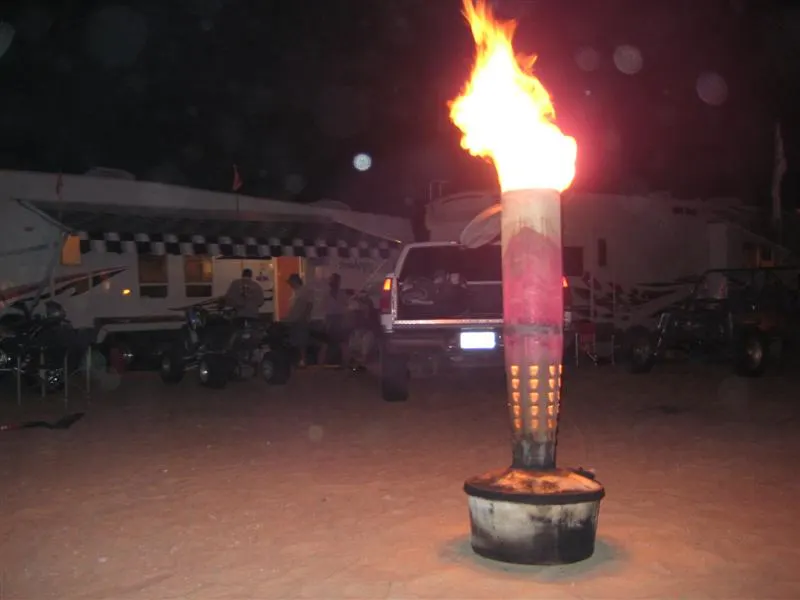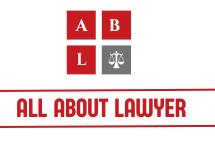Are Smudge Pots Legal? State-by-State Regulations, EPA Rules, and Compliance Requirements
Smudge pot legality varies dramatically by jurisdiction. California requires all orchard heaters to meet CARB approval and emit no more than 1 gram per minute of unconsumed carbonaceous matter, while federal EPA regulations in tribal lands exempt smudge pots from opacity limits. Most states prohibit traditional oil-burning smudge pots for agricultural use but allow modern return-stack orchard heaters that burn diesel or kerosene and meet strict emission standards.
Understanding your specific state and local regulations determines whether you can legally operate these frost protection devices on your agricultural property.
The Legal Status of Smudge Pots Across the United States
Traditional smudge pots—oil-burning devices that produce thick black smoke—face widespread restrictions. Modern “return pipe orchard heaters” operate under different legal standards.
New York municipalities like Kingston banned flame-operated smudge pots on public streets since 1973, classifying violations as Class B misdemeanors. Riverside County, California requires property owners to dispose of smudge pots and fuels as hazardous waste.
Agricultural operations using these devices must navigate complex federal, state, and local regulations governing air quality, emissions, and frost protection methods.
California’s CARB Regulations: The Strictest Standards
California maintains the most stringent smudge pot regulations in the nation.
Section 438 of California’s State Implementation Plan prohibits the sale of new orchard heaters for frost damage unless approved by the California Air Resources Board (CARB). All devices must produce less than 1 gram per minute of unconsumed solid carbonaceous matter.
The Great Freeze of 1913 created a turning point when smudging blanketed Southern California in thick black smoke, prompting cities to ban the process. By 1947, state legislation outlawed many types of older, smokey heaters.
California Compliance Requirements:
- CARB approval required for all new orchard heaters
- Maximum 1 gram per minute particulate emissions
- No burning permits needed for compliant orchard heaters
- Return-stack heaters emit 0.2-0.4 grams per minute (compliant)
- Traditional smudge pots burning used oil (non-compliant)
Forum discussions suggest Southern California banned traditional smudge pots as early as 1957, with potential fines reaching $1,200.
Related article: California’s Ferret Ban Upheld, Why These Pets Remain Illegal While 48 States Allow Them

Federal EPA Exemptions and Tribal Land Regulations
Federal regulations under 40 CFR Part 49 Subpart C specifically exempt smudge pots from opacity limits on tribal lands, along with agricultural activities and forestry operations.
The EPA definition clarifies compliance boundaries: “Smudge pot means a portable heater/burner that produces thick heavy smoke and that fruit growers place around an orchard in the evening to prevent the crop from freezing at night”.
This federal exemption applies only to tribal lands under Federal Implementation Plans. State regulations govern smudge pot use on private agricultural land.
State-by-State Smudge Pot Legality Breakdown
Oregon:
Since 2015, NRCS has provided $900,000 in funding to 15 Hood River Valley fruit growers to remove over 3,000 diesel smudge pots, preventing 54 tons of particulate matter by 2017. Oregon actively incentivizes farmers to abandon traditional smudge pots for cleaner frost protection methods.
New Jersey:
New Jersey agricultural businesses must fuel smudge pots only with kerosene or No. 2 fuel oil. Failure to comply results in enforcement action by the Division of Air Quality.
New York:
Kingston and other municipalities prohibit flame-operated devices including smudge pots on public streets. Agricultural use requires local permits.
Ohio:
Stow, Ohio explicitly exempts smudge pots for occupational heating needs from open burning restrictions, allowing use for outdoor worker warmth.
Texas, Florida, Washington:
No specific statewide smudge pot bans exist, but general air quality regulations and outdoor burning rules apply. County-level restrictions vary significantly.
Return-Stack Orchard Heaters vs. Traditional Smudge Pots
The distinction between device types determines legality in most jurisdictions.
Traditional Smudge Pots (Widely Restricted):
- Burn crude oil, used motor oil, waste oil
- Produce thick black smoke exceeding 1g/minute emissions
- Create severe air quality impacts
- Largely banned since 1970s
Return-Stack Orchard Heaters (Generally Legal):
- Burn diesel or refined fuels, producing 0.2-0.4g/minute emissions
- Feature return pipes that recycle exhaust for cleaner combustion
- Meet CARB and EPA emission standards
- Still sold commercially for agricultural frost protection
Industry representatives recommend calling these devices “return pipe orchard heaters” rather than “smudge pots” when questioned by authorities.
Air Quality Standards and Emission Requirements
Agricultural operations must meet specific emission thresholds.
San Joaquin Valley regulations specify maximum particulate matter emissions for orchard heaters cannot exceed 1 gram per minute under Rule 4303. Orchard heaters burn diesel at approximately 1 gallon per heater-hour.
Federal opacity limits restrict visible emissions to 20% opacity averaged over six consecutive minutes, though smudge pots receive exemptions on tribal lands.
Compliance verification requires:
- Fuel composition documentation (diesel, kerosene, No. 2 fuel oil)
- Emission rate testing for new devices
- Return-stack design with proper venting
- No burning of waste oils or high-smoke fuels
Penalties for Illegal Smudge Pot Operation
Violations carry significant consequences depending on jurisdiction.
New York classifies smudge pot violations on public streets as Class B misdemeanors under the state Penal Law. California enforcement includes fines exceeding $1,000 for non-compliant devices.
Riverside County can impose Special Assessment Liens on properties requiring smudge pot abatement, recovering actual enforcement costs including contractor fees and investigations.
Agricultural operations face additional penalties:
- Air quality violation fines ($500-$5,000 per incident)
- Mandatory device removal and disposal
- Loss of agricultural permits
- Potential civil liability for air quality impacts
NRCS Financial Incentives for Smudge Pot Removal
The Natural Resources Conservation Service actively pays farmers to eliminate traditional smudge pots.
Through the National Air Quality Initiative starting in 2015, NRCS funded removal of 3,000 diesel smudge pots, awarding approximately $900,000 to 15 Oregon fruit growers. This program prevents 54 tons of annual particulate matter emissions.
Farmers replacing smudge pots with cleaner technologies receive:
- Financial assistance for device removal
- Funding for wind machine installation
- Support for air curtain burner adoption
- Technical guidance on modern frost protection
Oregon growers eliminated 1.35 tons of particulate matter in 2015 alone by switching to air curtain burn boxes for orchard pruning waste.
Legal Alternatives to Smudge Pots for Frost Protection
Agricultural operations have multiple compliant frost protection options.
Wind Machines:
125 horsepower motors drive aircraft propellers on towers, circulating warmer air downward without emissions. High initial cost limits adoption to large growers.
Air Curtain Burners:
“Burn boxes” produce minimal smoke and significantly reduce particulate discharge compared to traditional burn piles.
Modern Return-Stack Heaters:
Commercially available devices burn diesel fuel cleanly, meeting emission standards across agricultural states.
Propane Heaters:
Industrial-grade propane units provide clean heating without smoke or emissions violations.
Irrigation and Covering Methods:
Overhead sprinklers create ice layers that protect crops; fabric covers trap heat without combustion.
Historical Context: Why Smudge Pots Were Banned
Understanding regulatory history explains current restrictions.
Between 1870s experimental plantings and the 1940s apex, Southern California’s “Orange Empire” relied on smudge pots, with over 67,000 acres of Valencia oranges planted by 1948.
During the 1922 freeze, smudging shut down the Port of Los Angeles—acrid soot clouds became too thick to navigate. The 1924 freeze created daytime darkness resembling a solar eclipse. By 1937, motorists drove with headlights at midday due to smudge smoke.
Exhausted workers trudged home under lingering smoke with blackened faces, coughing up black phlegm. Soot ruined laundry, streaked buildings, and caused respiratory distress.
As oil prices rose in the 1970s and environmental concerns mounted about toxic emissions, smudge pots were largely banned from agricultural fields.
Current Enforcement Trends and Compliance Status
Agricultural regulators increasingly focus on air quality compliance.
San Joaquin Valley reporting notes decreasing orchard heater usage, with emissions inventories collected by contacting county Agricultural Commissioners. Activity concentrates between November 15 and February 15, primarily at night for 6-hour periods.
Traditional smudge pots have been “pulled from all Citrus orchards in CA” according to agricultural community discussions. Return-stack heaters burning diesel remain the only compliant option.
Local enforcement varies significantly. Some jurisdictions actively pursue violations while others respond only to complaints about excessive smoke or air quality impacts.
Practical Compliance Steps for Agricultural Operators
Farmers and growers must take specific actions to operate legally.
Before Using Any Orchard Heater:
- Verify state and county air quality regulations
- Confirm device type meets emission standards
- Document fuel composition (diesel, kerosene, No. 2 fuel oil only)
- Check for local burning bans or permit requirements
- Maintain records of compliance efforts
For California Operations:
- Only use CARB-approved return-stack heaters
- Never burn waste oil, used motor oil, or crude petroleum
- Keep emissions below 1 gram per minute
- Contact local Air Quality Management District for permits
For Other State Operations:
- Research county agricultural commissioner requirements
- Apply for necessary burning permits before frost season
- Consider NRCS funding for device upgrades
- Consult environmental compliance professionals
What This Means for Farmers Today
Smudge pot legality depends entirely on device type, fuel source, jurisdiction, and emission rates.
Traditional oil-burning smudge pots are effectively banned nationwide due to air quality impacts. Modern return-stack orchard heaters burning clean diesel remain legal in most agricultural regions when meeting emission standards.
Farmers face a choice: invest in compliant frost protection equipment or risk significant penalties for operating outdated, illegal devices. Federal and state programs offer financial assistance for transitioning to cleaner technologies.
The agricultural industry has largely moved beyond smudge pots. Wind machines, propane heaters, and modern return-stack devices provide effective frost protection without regulatory violations or environmental harm.
Frequently Asked Questions About Smudge Pot Legality
Are traditional smudge pots legal anywhere in the United States?
Traditional smudge pots receive federal exemptions only on tribal lands under EPA regulations. Most states prohibit them for agricultural use due to air quality violations. Modern return-stack heaters meeting emission standards remain legal in many jurisdictions.
What’s the difference between a smudge pot and an orchard heater?
Return-stack orchard heaters produce emissions of 0.2-0.4 grams per minute compared to traditional smudge pots that exceed 1 gram per minute. Return-stack devices recycle exhaust for cleaner combustion and meet regulatory standards.
Can I burn waste oil in an orchard heater?
Industry representatives only recommend diesel or refined fuels, stating used engine oil will not meet emissions requirements. New Jersey specifically requires kerosene or No. 2 fuel oil only. Waste oil burning violates air quality standards nationwide.
What are the penalties for using illegal smudge pots?
Penalties include Class B misdemeanor charges in New York, Special Assessment Liens on property in California counties, and air quality fines ranging from $500 to $5,000 per incident depending on jurisdiction.
Does California allow any smudge pots or orchard heaters?
California requires CARB approval for all orchard heaters and mandates emissions below 1 gram per minute of carbonaceous matter. Return-stack heaters burning diesel meet these requirements. Traditional smudge pots are prohibited.
Are there grants to help farmers replace smudge pots?
The NRCS National Air Quality Initiative has provided $900,000 since 2015 to help farmers remove diesel smudge pots and adopt cleaner systems. Contact your local NRCS office for current funding availability.
Can I use a smudge pot for recreational camping?
Legality varies by location and land management. Some jurisdictions like Stow, Ohio exempt smudge pots for occupational heating needs. Always check local fire regulations, air quality rules, and land management policies before using any combustion heating device.
Disclaimer: This information is for educational purposes only and does not constitute legal advice. Consult an attorney specializing in agricultural law for specific compliance guidance. Contact your state agricultural department and local Air Quality Management District for current regulations applicable to your operation.
Related Articles
- Which Government Bodies Make Consumer Protection Laws
- What Are the Importance of Business Law
- Questions to Ask a Lawyer When Starting a Business
About the Author

Sarah Klein, JD, is a licensed attorney and legal content strategist with over 12 years of experience across civil, criminal, family, and regulatory law. At All About Lawyer, she covers a wide range of legal topics — from high-profile lawsuits and courtroom stories to state traffic laws and everyday legal questions — all with a focus on accuracy, clarity, and public understanding.
Her writing blends real legal insight with plain-English explanations, helping readers stay informed and legally aware.
Read more about Sarah
